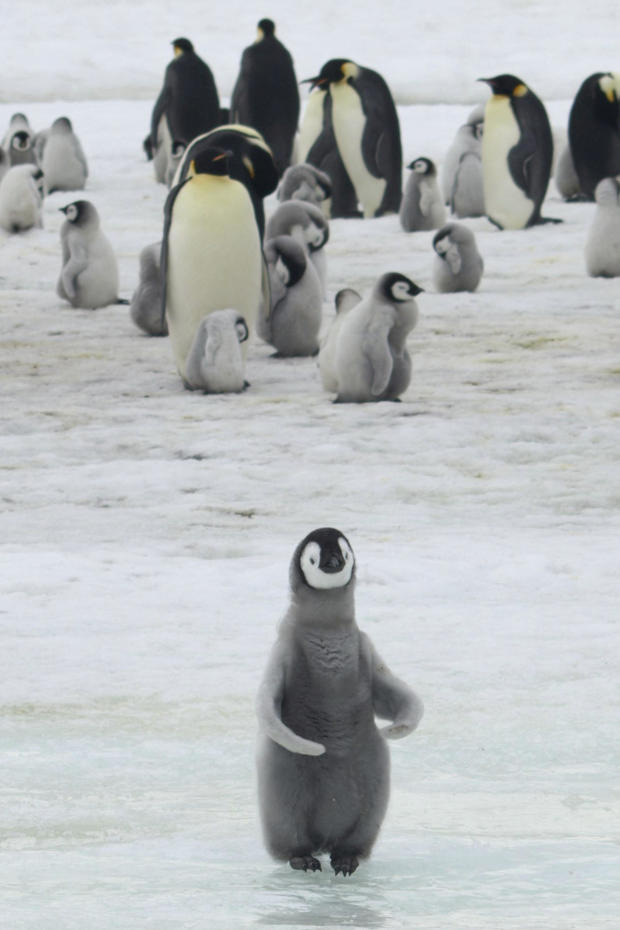Antarctic emperor penguins experiencing "unprecedented" breeding failure
A study published Wednesday says penguins in the world's second largest emperor penguin colony have experienced three years of almost total breeding failure -- a pattern scientists called "unprecedented."
The emperor penguin colony at Halley Bay in Antarctica has been studied by researchers since 1956. It is the largest emperor penguin colony in the region and represents between 6.5 and 8.5 percent of the global population. According to the study, "there had been no previously recorded instances of total breeding failure at the site."
Researchers for the British Atlantic Survey published their findings in the scientific journal Antarctic Science, where they made a connection between the prolonged period of non-breeding and the breakup of fast ice in the ice creeks penguins use for breeding. Fast ice is land-connected sea ice that serves as the ground on which emperor penguins incubate their baby chicks before moving into the open sea.
"In 2016 and 2017, low sea ice extent and early breakout of sea ice in spring resulted in complete breeding failure," the study says.
"Subsequent ... imagery shows that by 29 November 2018, all of the fast ice on the north side of the Brunt Ice Shelf had gone, highlighting a third year of probably total breeding failure," it says. "These assumed failed breeding events are of a scale that is not apparent in the long, but sporadic record from the site."
While the study qualifies the findings by stating that "understanding how environmental drivers ... impact upon the breeding colony of Halley, or indeed elsewhere, remains a key challenge," it concludes the penguin breeding failure has "been driven by a change in sea-ice conditions and early breakup of face ice on the northern side of the Brunt Ice Shelf, which may be due to El Niño-Southern Oscillation events and/or ice-shelf morphology."
The study does not directly point to climate change as a driver for these conditions, but it does declare weather patterns were abnormal according to the recorded data.
"What is certain is that in September 2016 ... average atmospheric pressure for the month was the lowest for September in over 30 years, whilst average wind speed was the highest in September over a similar time frame," the study says "Temperatures were also higher than average."




